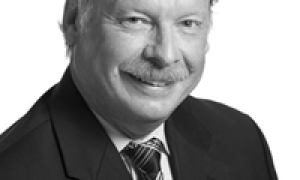The highway trust fund has been running on empty for nearly a year now. All that keeps the program chugging along are subsidies from general revenues.
It wasnt always thus. In fiscal 2000, the trust fund - a repository of federal per-gallon fuel taxes paid by drivers - boasted a $23 billion surplus. But in 2005, the highway reauthorization bill OK'd program spending in excess of fuel tax collections. The rest, as they say, is deficit history.
Once a moneymaker for the feds, the highway trust fund is now part of the problem of exploding government deficits. And the Congressional Budget Office projects the funds financial problems will only get worse. Under current legislation, the CBO says, programs normally funded by highway user taxes will require $67.3 billion in general revenue subsidies over a five-year period ending in fiscal 2012.
The trust fund will pile up another $56.1 billion in losses in the five years after that. And thats not counting the 75 percent spending hike proposed in the six-year, $500 billion Surface Transportation Authorization Act drafted by House Transportation and Infrastructure Committee Chairman James L. Oberstar, Minnesota Democrat.
Rather than double down and institutionalize a deficit-riddled federal highway program, its time to reform the system. Washington should return surface transportation responsibility to the states, along with the right to levy the 18.3-cents-per-gallon federal fuel tax.
The proposal was first put forth in 1995 by Sen. Connie Mack, Florida Republican, and Rep. John R. Kasich, Ohio Republican. They dubbed the idea the "turnback" proposal, highlighting its goal of restoring surface transportation decision-making and revenue-raising authority to the states.
By shifting resources and responsibility to the states, turnback offers the traveling public five key benefits:
- It gives the motorists and truckers who fund the system a more equitable return on their tax "investment" and would improve their overall mobility.
- It eliminates the inequitable geographic allocations in the current system (motorists in some states get back far less than they put into the trust fund).
- It would end the corrupt earmarking process rampant in congressional transportation legislation.
- It would let state officials, not Washington bureaucrats or earmarking lawmakers, determine transportation priorities and how best to meet them.
- It would empower reform-minded state officials, no longer hobbled by federal prohibitions and costly mandates, to introduce promising reforms.
To smooth the transition from federal to state control, the turnback plan should gradually phase out the federal fuel tax while maintaining minimum trust-fund spending levels on a series of federally mandated projects. For example, the federal tax could be reduced from the current level of 18.3 cents per gallon to, say, 16.3 cents next year, 11.3 cents in the third year, and so on, until it is eliminated at the end of a five-year transition period.
As the federal tax declines, states could raise their own fuel taxes by the same amount. In this way, state officials could maintain overall transportation spending by replacing lost federal revenues with new state revenues, and motorists would see no change in the total fuel tax burden.
Ronald Utt is the Herbert and Joyce Morgan Senior Research Fellow for the Thomas A. Roe Institute for Economic Policy Studies at The Heritage Foundation
First appeared in The Washington Times

